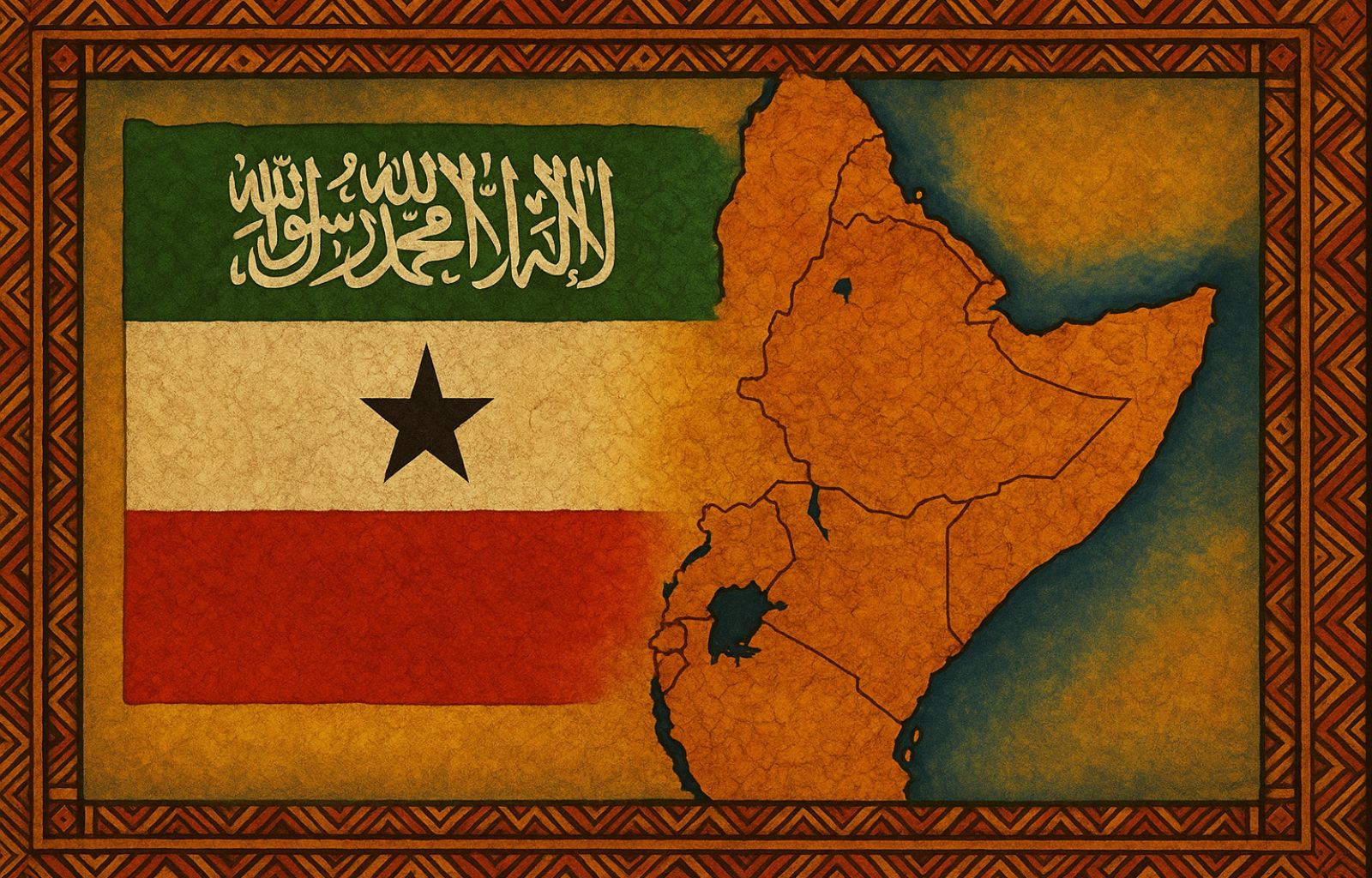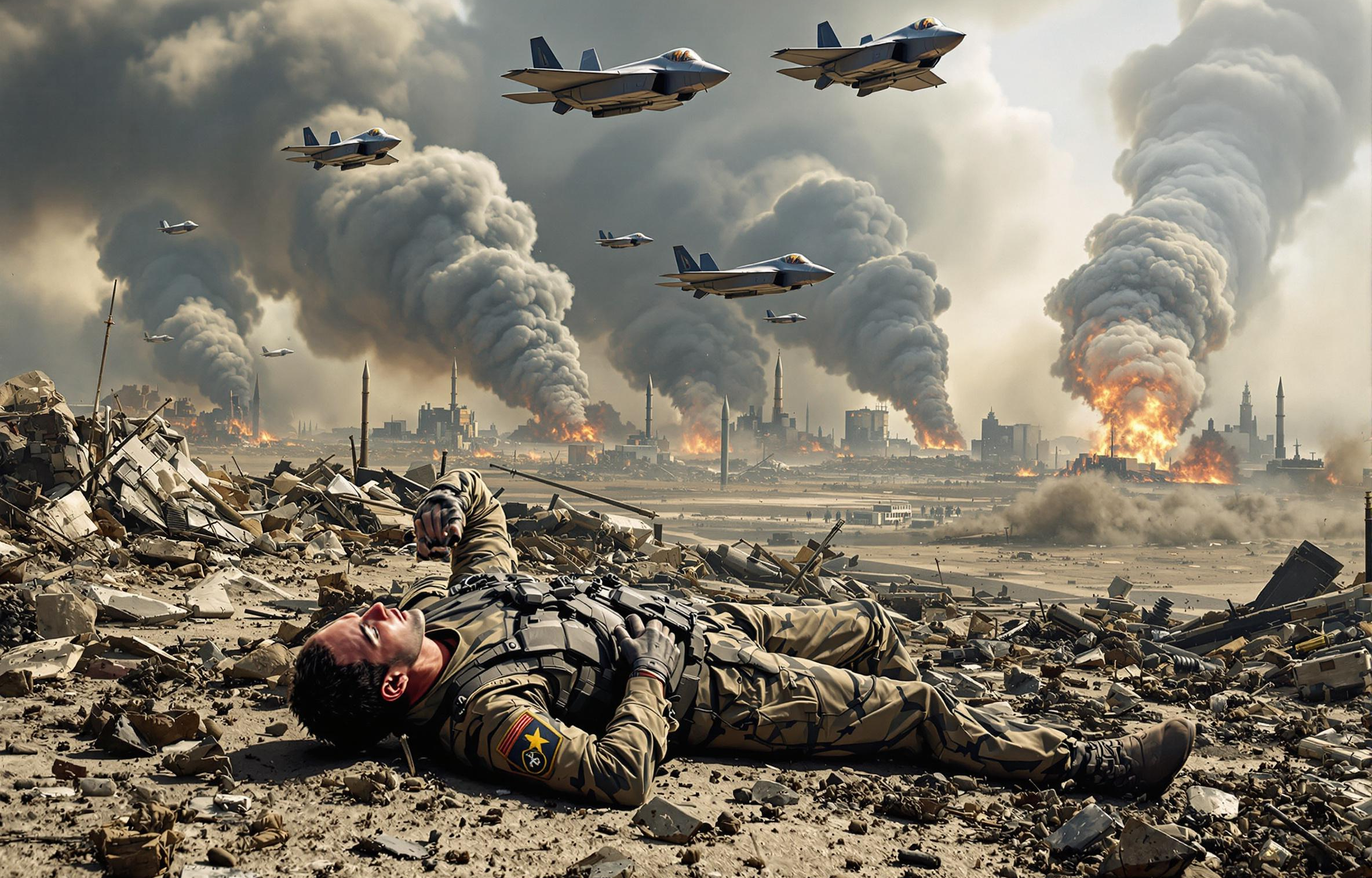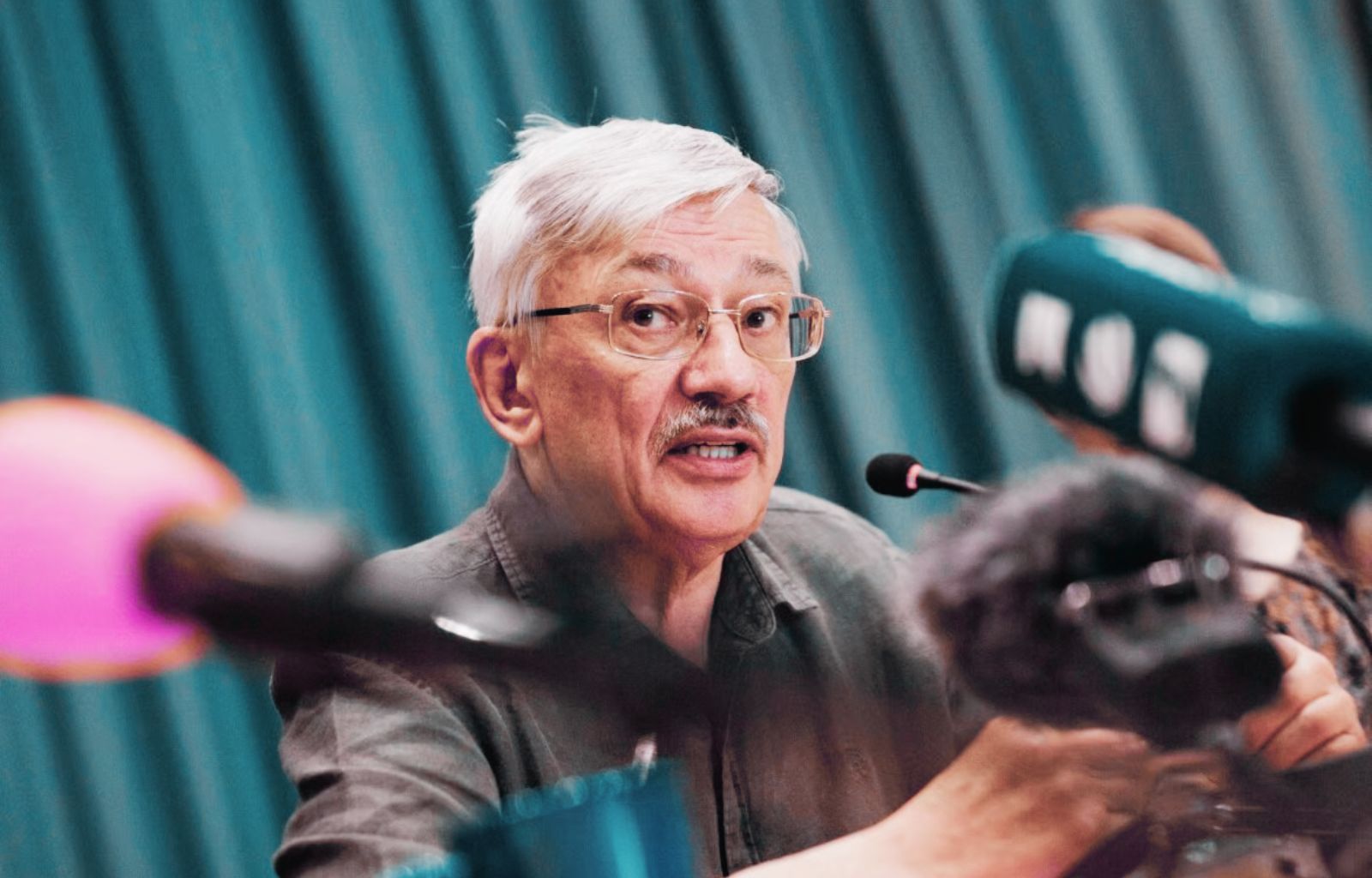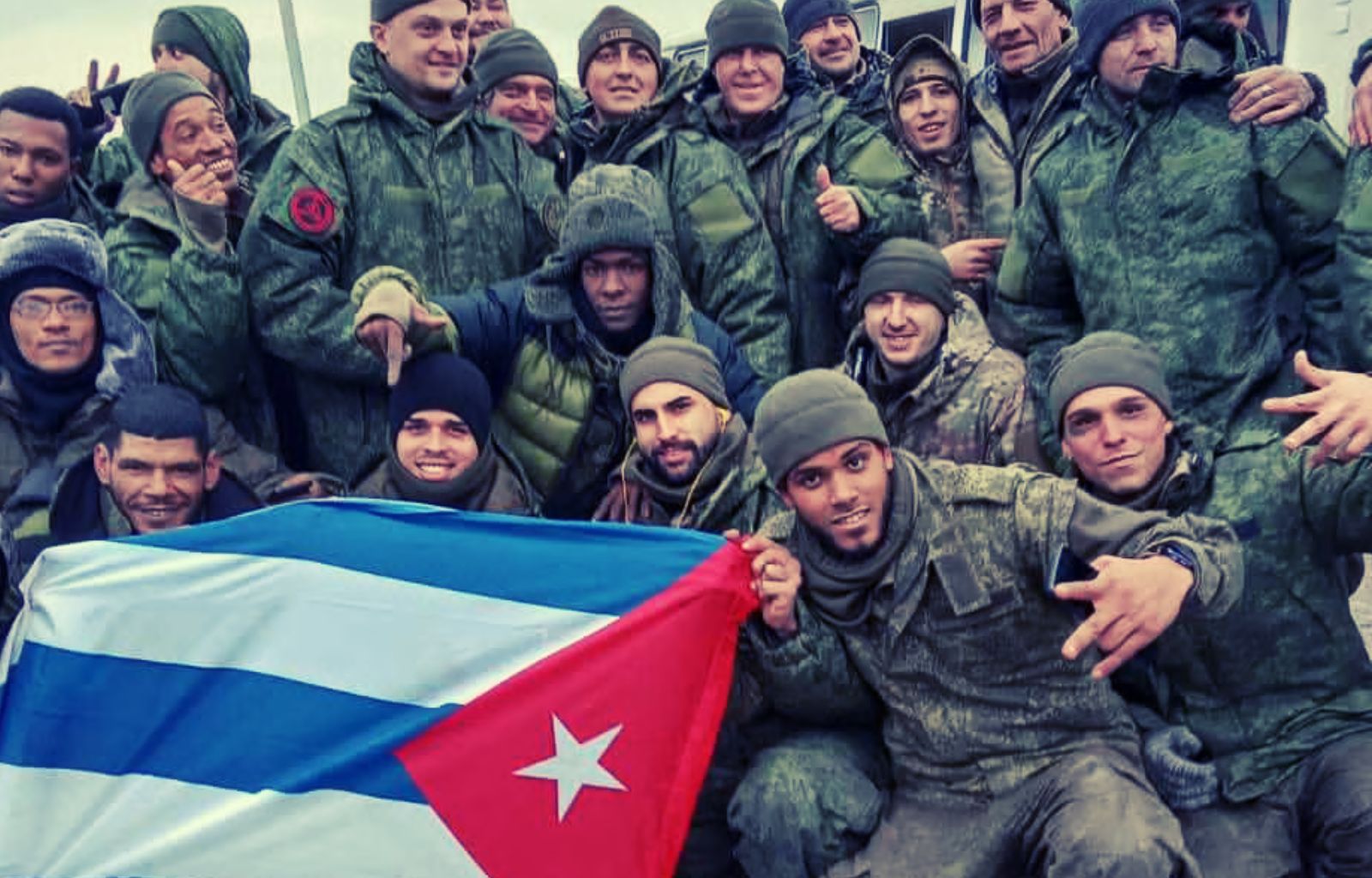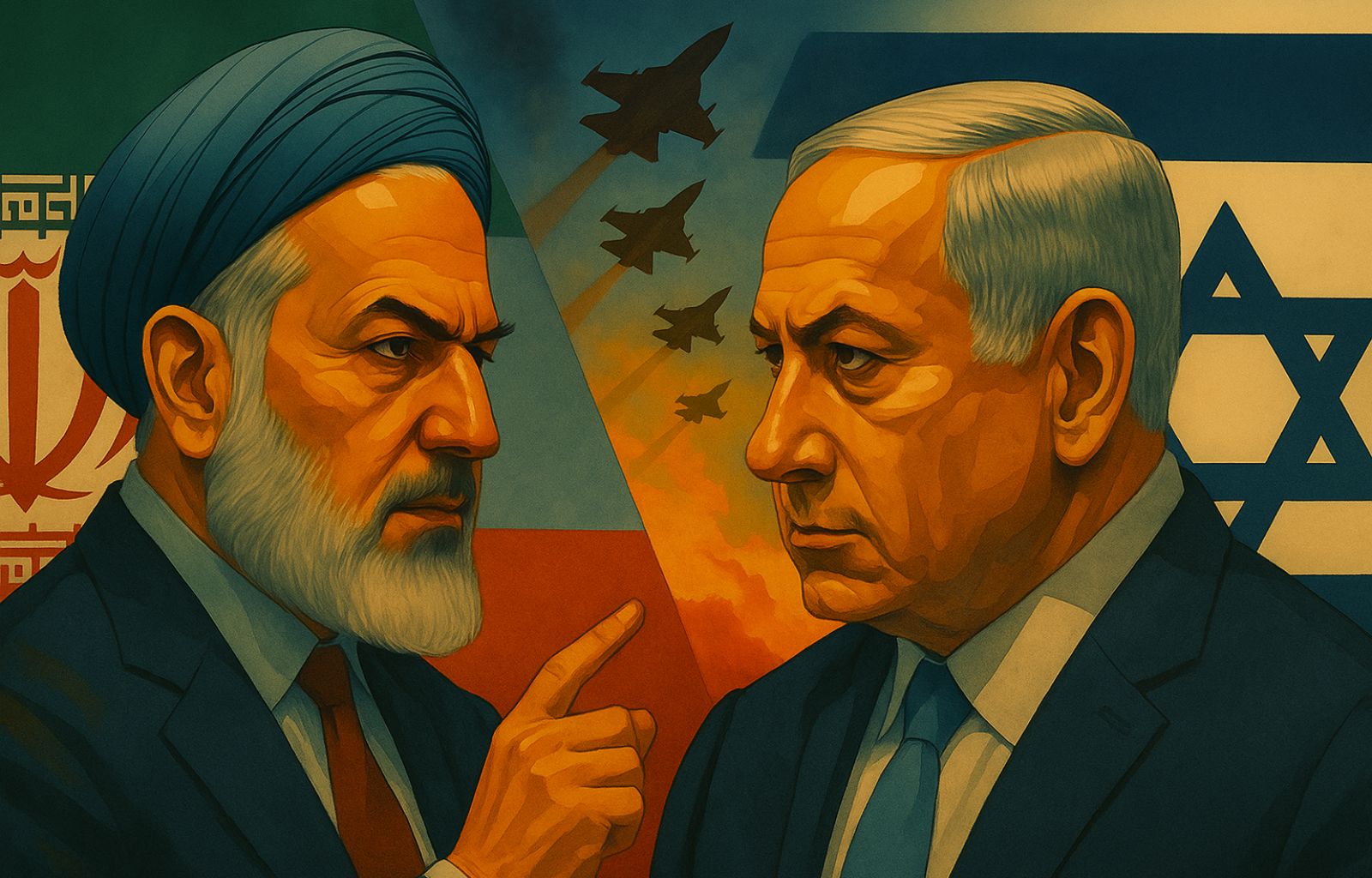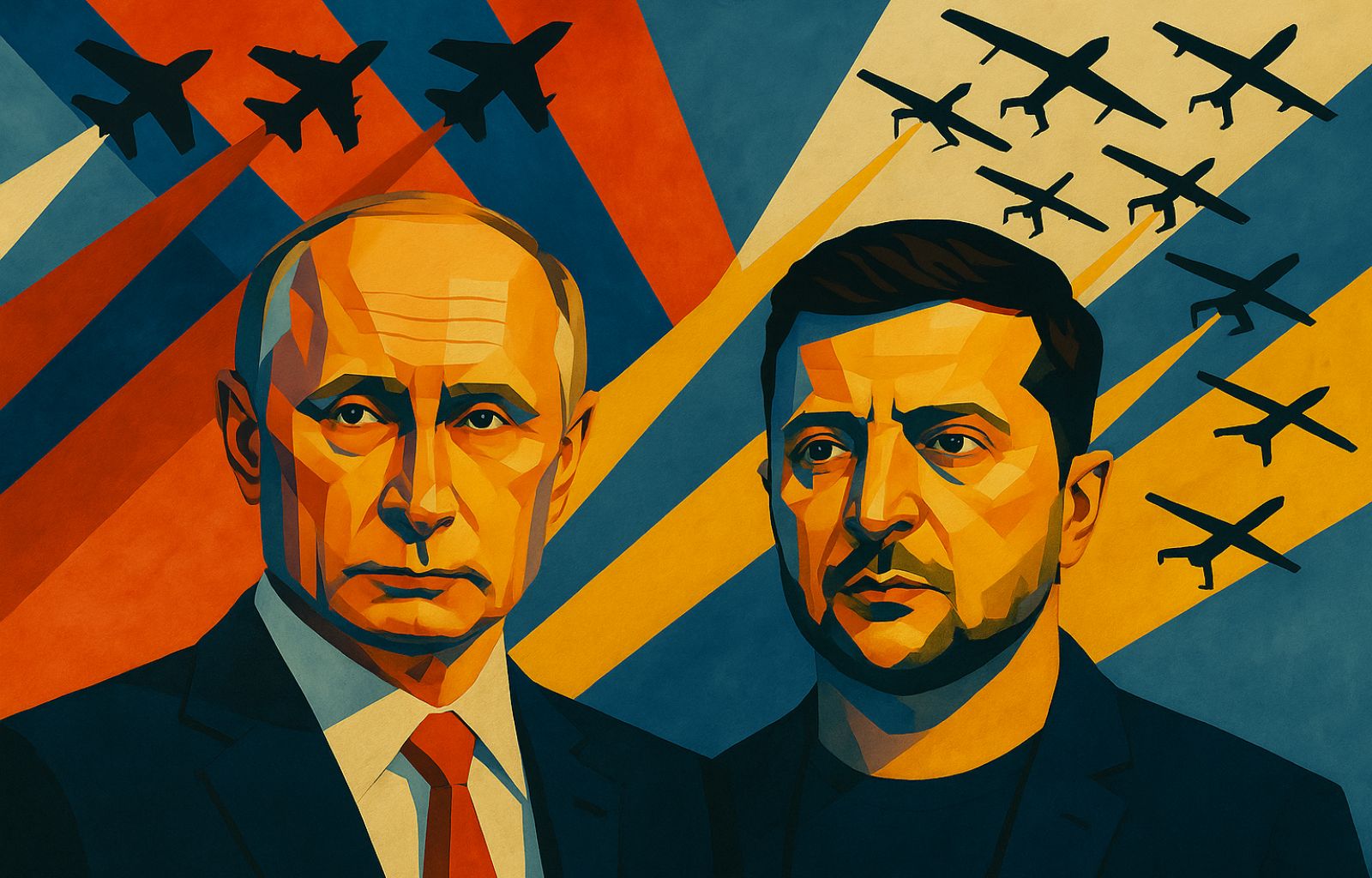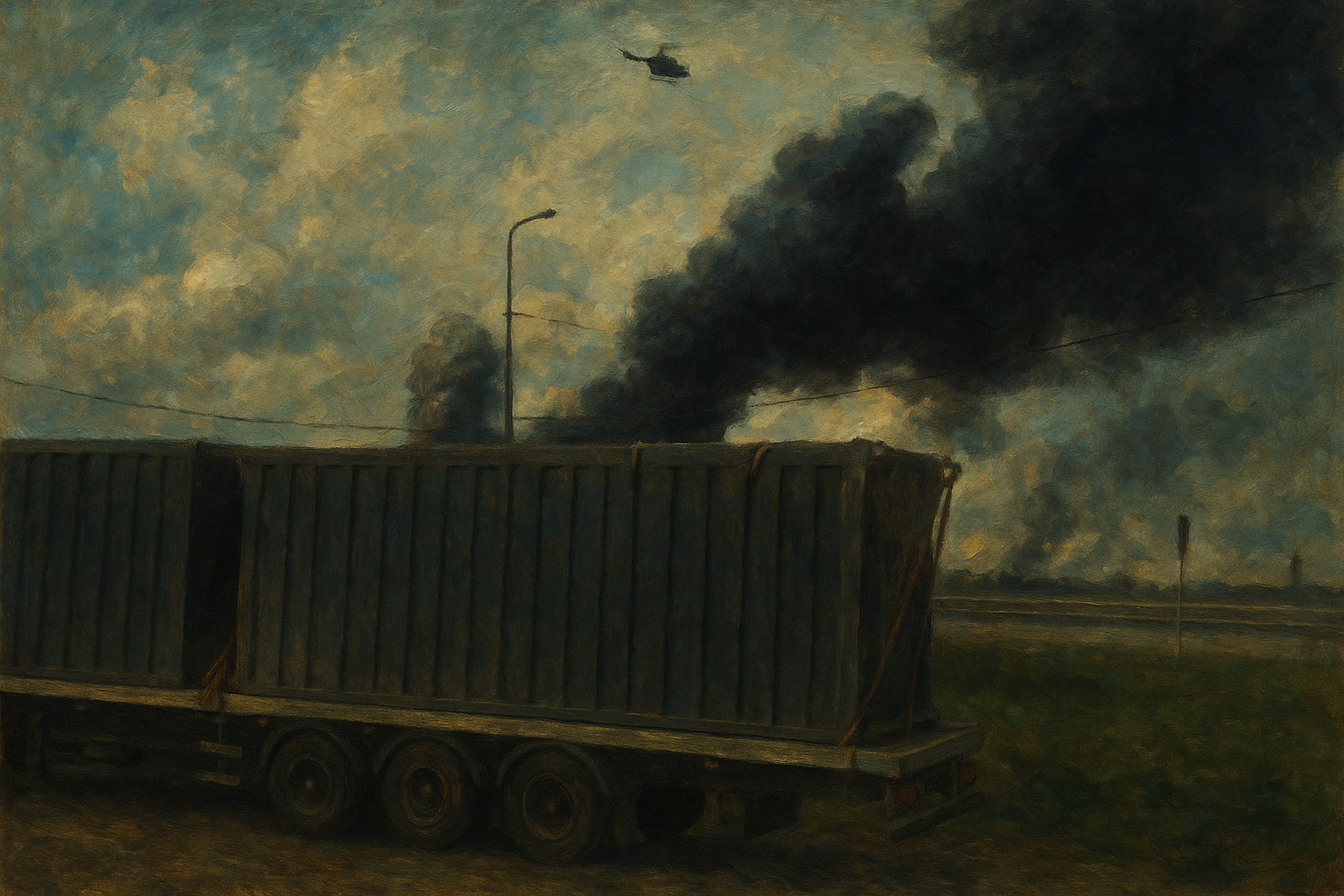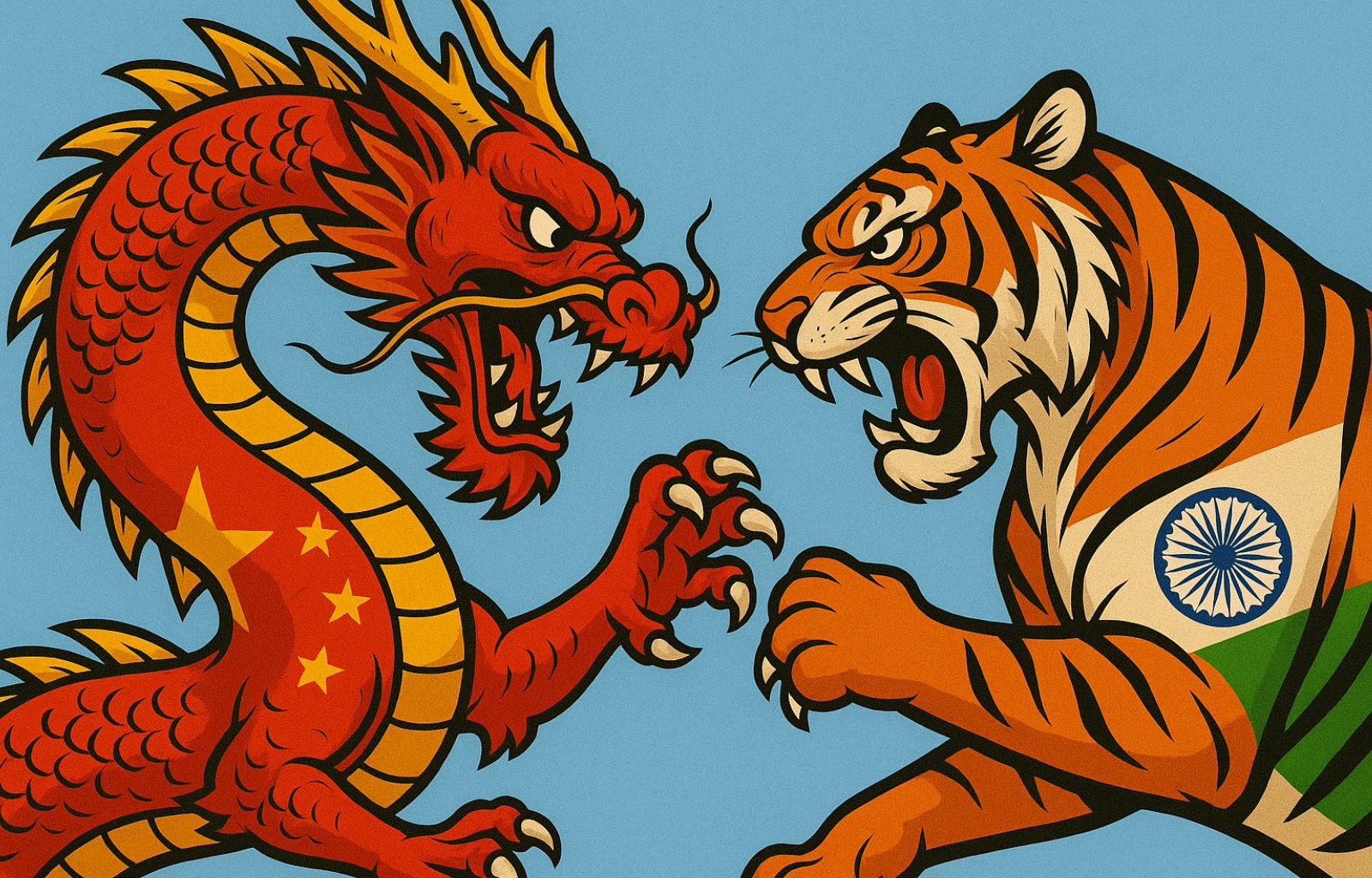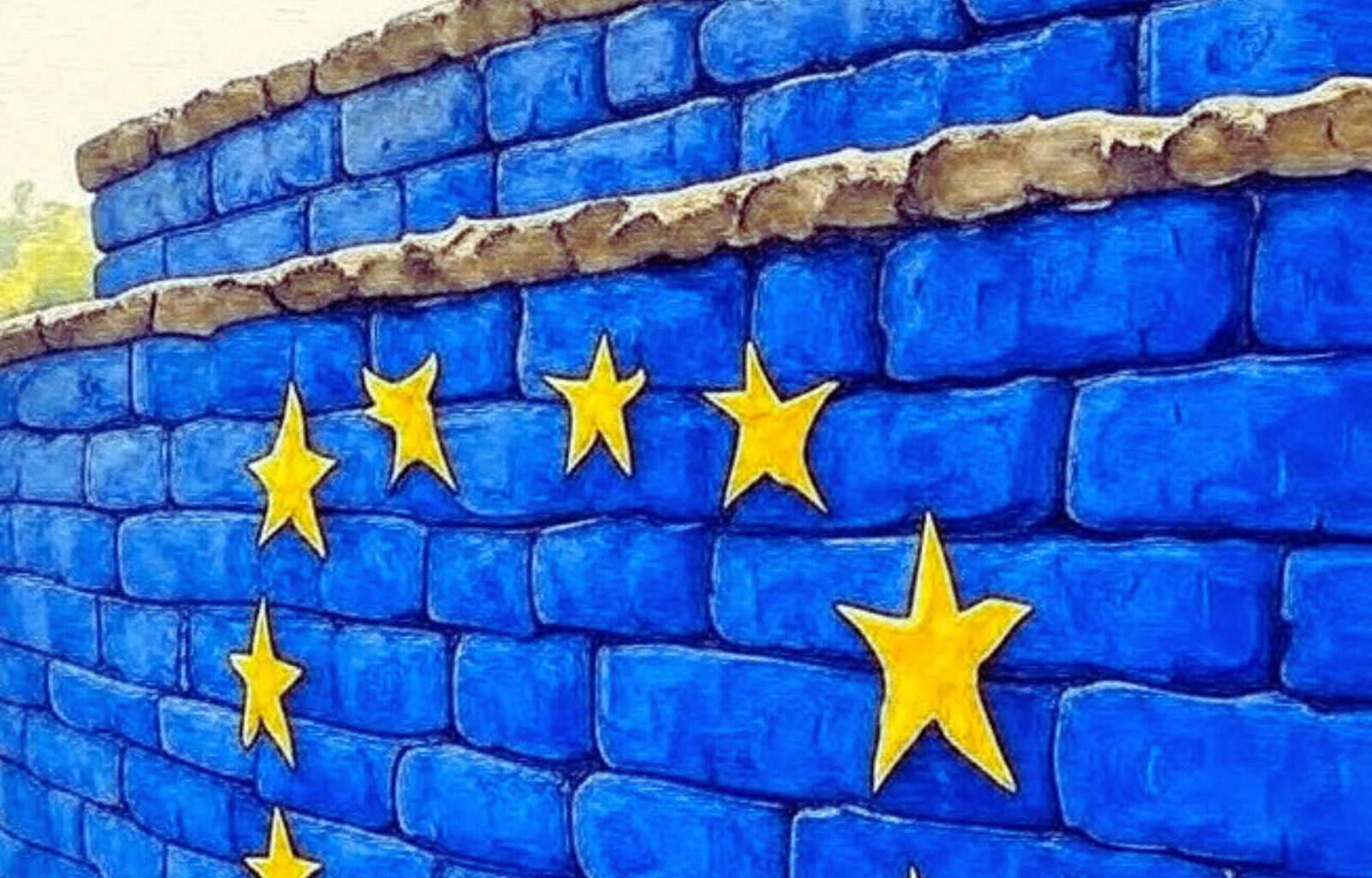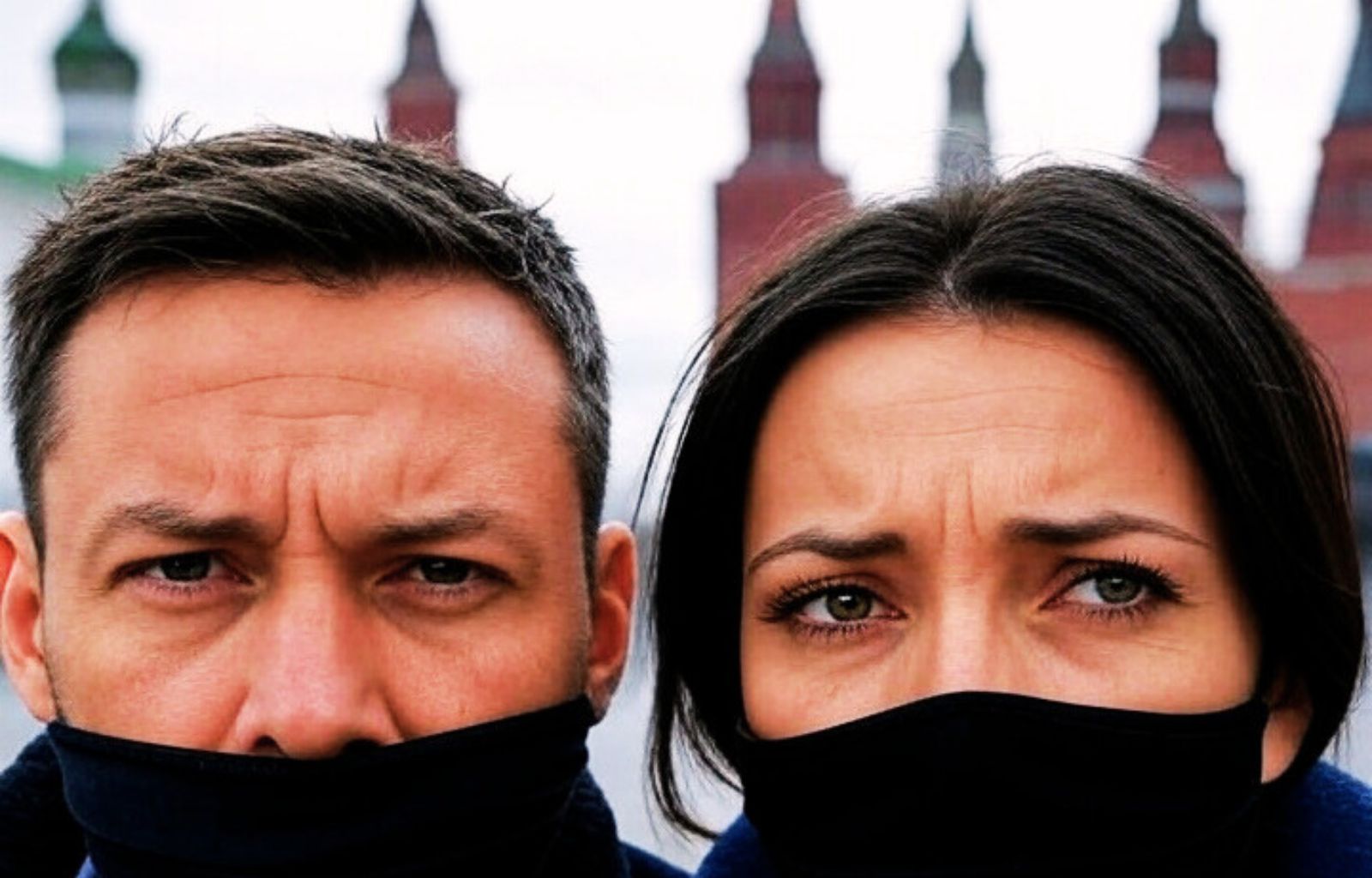Israel vs Iran. The redefinition of the Middle East balance and the new geopolitics of containment
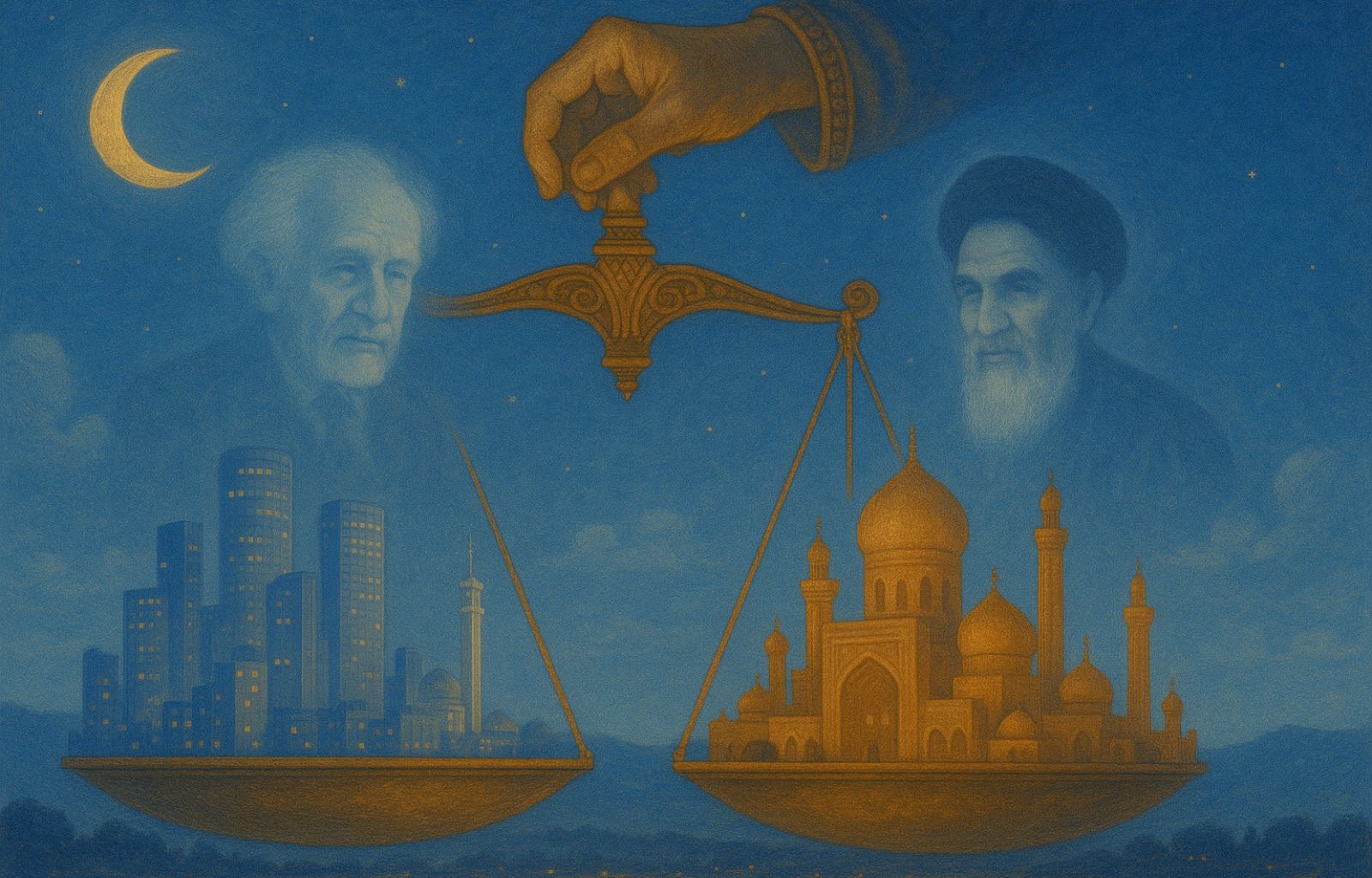
The night of 12-13 June marked a structural turning point in relations between Israel and Iran. Operation Rising Lion hit crucial infrastructure with surgical precision: nuclear sites in Natanz and Tabriz, air defence systems, and central figures in Iran’s scientific and military apparatus – including Salami, Bagheri, Tehranchi and Abbasi. In addition to the immediate material devastation, the attack revealed a structural fragility matured through years of sanctions, defensive failures and organisational incapacity: Iran showed itself to be vulnerable, exposed and unprepared. This was not an isolated escalation, but a fractured moment that redefined regional deterrence, recalibrating thegeopolitical and narrative balance on a global scale.
A (definitive) blow to the snake’s head
Israel fielded a synchronised combination of kinetic attacks and hybrid warfare: the degradation of Iranian defences took place with invisible drones, parallel cyber-attacks and targeted aerial bombardments, accompanied by an emergency narrative that reduced the window of diplomatic condemnation. The effect is twofold: on the one hand, the effectiveness of preventive deterrence is affirmed, and on the other, a speeding up of strategic timing in an area traditionally structured in deferred logic is imposed.
At the same time, Israeli strategic communication reaffirmed a new paradigm: the nuclear threat, now perceived as imminent, justified an intervention that could no longer be postponed. The chosen frame – inevitability, urgency, defensive legitimacy – reduced international legal constraints, polarising world opinion and earning silences or lukewarm judgements from key actors such as the US, the EU and the Gulf.
Israel’s ability to strike at the heart of the Iranian apparatus with precision and limited collateral damage resulted in an operational and psychological shock for Tehran. The operation turned a supposedly untouchable arsenal into a hitable target, undermining the Iranian regime’s perceived invulnerability.
Iran, wounded at its most sensitive point, now has to manage a double crisis: the attrition of its operational capabilities and domestic delegitimisation. A regime that has always presented itself as the defender of national sovereignty is now faced with theunexpected weakness of its own defences and the growing rift between the elite and public opinion, particularly the younger and more urban ones.
Within this framework, nuclear deterrence – which should have functioned as a deterrent – has become obsolete. It is not enough to have potential bombs: it is necessary to prove that they can be used. Israel has done so, Israel has reversed the paradigm. And now Iran finds itself having to respond, in a scenario where everyone is playing with their own times, resources and narratives.
Geopolitics in the Middle: Changing Balances
Israeli intelligence has shown superior capabilities on three fronts: autonomous technology (stealth drones), cyber-sabotage comparable to Stuxnet 2.0, and surgical targeting of leadership and infrastructure. Theinfiltration of drones into Iranian airspace has overcome defensive barriers that are still considered operational. Iran’s anti-aircraft systems, while numerous, have proven ineffective, with gaps in coordination, command and intelligence sharing with the regular army. Incidentally, as the publication of some videos shows, Mossad played a more strategic role than one might think.
Behind Operation Rising Lion, a few dozen elite secret service agents moved surgically, orchestrating a series of simultaneous attacks aimed at neutralising Iran’s defences. Their primary objective? Expose the Islamic Republic’s vulnerabilities and demonstrate Israeli intelligence penetration capabilities – even before the stealth fighters swooped down through Iranian airspace. Once the breach was opened, precision weapons hit nuclear and missile sites, even eliminating apex regime figures.
At dawn, with the operational device ofOperation Am Kelavi – literally ‘Rising Lion’ – these assault units launched kamikaze drones at critical targets, confirming the presence of Mossad cells deployed deep within Iranian territory. Less visible than aircraft, more lethal at short range.
As the fighter planes approached, commandos activated pre-positioned electronic devices, deployed weeks earlier on clandestine, high-risk missions. Mobile anti-aircraft batteries, radar systems, and electronic warfare equipment – all deactivated by the book to ensure the current operational freedom of the Israeli bombers. Following this, hundreds of precision-guided missiles struck simultaneously at carefully selected targets.
According to sources in Tel Aviv, the operation was conceived and conducted in close synergy between Mossad andAman, the military intelligence service. A partnership that combined strategic capability, tactical intelligence and operational projection, in the heart of Iran.

This generated two distinct effects: material – the loss of infrastructure and key figures – and psychological – the delegitimisation of the Iranian leadership and the vulnerability of an entire system. Hitting Salami and Bagheri weakened not only the chain of command, but also the national security narrative based on the Pasdaran‘s military efficiency. Israeli intelligence exposed a network of vulnerabilities that Iranian elites considered untouchable.
The concept of strategic resilience in Iran today appears paradoxical: an authoritarian and militarily imposing regime, but incapable of guaranteeing the protection of its leadership, especially its scientific leadership, which is crucial to the nuclear programme. The suspension of exercises, the use of poorly defended bunkers, and the lack of preventive evacuation demonstrate a systemic crisis: an apparatus that fears attack but does not know how to defend itself.
Israel also exploited this disorganisation on a narrative level. The chosen frame – ‘imminent threat ‘ – was supported by a simultaneous communication strategy: immediate attack, live communication(Netanyahu from Tel Aviv), shifting the international agenda towards theinevitability of Israeli defensive action.
source: Le GrandContinent.eu
Islamic Republic in chaos: the beginning of the end?
In contrast, the Iranian response appeared fragmented. Aggressive statements – ‘we will bring the vile Zionist regime to its knees ‘ – tried to channel internal anger, but lacked structural coherence. They were not accompanied by a credible operational plan. The few drone interceptions, sporadic radar attacks anddiplomatic self-exclusion reveal a regime bent on tactical resistance.
Clear divisions are also emerging within Iran. The pressures of international sanctions, combined with popular protests, make the official narrative of national unity less and less sustainable. Fragilities of urban public opinion, particularly among the youth, undermine Iran’s war narrative, which risks breaking through a wall of social resentment.
New concept of strategic attrition imposes itself as a key element: Israel maintains theinitiative, obstructs Iranian reorganisation, blocks the resumption of the nuclear programme and undermines the representation of itself as an invulnerable power. The result is an asymmetrical theatre of operations, where the conflict does not cease, but is transformed and remains under Israeli control.
In response, Iran launched over 150 ballistic missiles against Israel as part of Operation True Promise III – a symbolic retaliation consistent with the narrative reiterated by Supreme Leader Ali Khamenei. Despite Israel’s high defensive capability(Iron Dome, David’s Sling, Arrow), the simultaneous mass of the attack highlighted the inherent limitations of any ballistic shield. Several carriers reached their targets, hitting a 32-storey skyscraper in Tel Aviv and the Ramat Man neighbourhood, with at least two dead and dozens injured.
From a strategic point of view, theattack on urban areas shows an asymmetry in the battlefields: Israel hit military and infrastructure targets, Iran retaliated on civilian targets. This is an expected dynamic: those who carry out a pre-emptive attack count on a non-selective retaliation. As recognised by the Israeli military commanders themselves, the Iranian response was expected and included in the strategic costs of the operation.
At the doctrinaire level, this response – however controversial – is part of the expected variables of the Israeli plan.Overconfidence in the invulnerability of air defence has generated an underestimation of the risks associated with missile saturation. In essence, any transformative strategy implies theacceptance of systemic risk: theidea of absolute security is more a rhetorical construct than an operational reality.
However, the Iranian operation also reveals a structural ambivalence: while external deterrence is affirmed on the one hand, internal fragilities emerge on the other. Defences have been compromised, civilian infrastructure damaged, and the regime’s ability to provide security for the population appears seriously weakened. In the next stages, the Iranian leadership will have to balance the logic of retaliation with a calibrated strategy of containment, taking into account internal pressures and the risks of political destabilisation associated with an out-of-control escalation.
War without war: possible scenarios and impacts on regional mechanisms
Despite the Iranian response with Operation ‘True Promise III’, the ‘Rising Lion‘ action has inaugurated a new phase of hybrid conflict, in which the war takes on fragmented forms, spread over several theatres and modalities. A low intensity multi-polar friction involving Hezbollah, Iraqi and Syrian militias, and Houthi is taking shape, with calibrated but simultaneous replicas on different fronts.
The most tangible risk remains silent regionalisation: sub-strategic, seemingly disconnected actions that increase pressure without leading toopen escalation. What emerges is a hybrid war composed of sporadic attacks, cyber-sabotage on naval and commercial infrastructure, and a deliberate slowness in the operational tempo, aimed at keeping the conflict below the conventional threshold.
The Strait of Hormuz, already the epicentre of tensions in 2019, regains strategic centrality. An even temporary interruption of oil traffic would create an economic domino effect, offering Gulf mediators a justification to intervene as stabilising actors. The implications are twofold: indirect pressure on Iran and stress-testing EU and US naval and logistical responsiveness.
The European naval missions – EMASoH and EUNAVFOR Aspides – take on a real operational function: from mere instruments of symbolic deterrence to pillars of Brussels‘ geopolitical credibility. Without concrete participation alongside regional fleets, the European narrative of trade protection and strategic stability risks collapsing.
In the near future, proxy militias may intensify asymmetric actions: attacks on oil pipelines, energy sabotage, and cyber offensives on banks, communication networks, and critical infrastructure. The conflict thus expands into hybrid spaces: air, naval, and digital, demanding multi-domain responses.
In this context, Turkey can play a role as a strategic facilitator, promoting a diplomatic corridor between the Gulf and the EU to contain escalation. Its geopolitical credibility will depend on consistency between Sunni-institutional rhetoric and concrete diplomatic practice.
The future is played out on a strategic bifurcation: either Iran will opt for internal restructuring, seeking to neutralise belligerent factions, or it will slide into a disorderly escalation fuelled by the mobilisation of regional militias. Either path poses direct risks to regional security, exacerbating the rift between the political and military cost of the current confrontation.

Other regional actors: rivalries, alliances and strategic fears
The Israel-Iran conflict is part of a much broader regional game in which Turkey, Saudi Arabia, the United Arab Emirates and Qatar play strategic roles, driven by historical Shia-Sunni rivalries and diverging geopolitical ambitions.
Turkey, led by Erdoğan, condemned the attack as ‘banditry, lawless‘. This assertive posture strengthens its image among Sunni public opinion, while avoiding direct involvement. Ankara offers itself as a mediator of reference, exploiting the vacuum left by the European disengagement, but tensions with Israel – already high after the Gaza crisis – risk reigniting the competition for influence over post-Assad Syria. The conflict, therefore, is both narrative and geopolitical.
Saudi Arabia, the Emirates and Qatar, after the détente between Riyadh and Tehran (2023), seek pragmatic mediation. The EU-Gulf summit in October 2024 had outlined energy and maritime cooperation, but the current crisis pushes these capitals to avoid militarised regionalisation that would jeopardise energy routes and critical infrastructure, central to European energy security.
Jordan, with limited military capabilities, assumes a defensive hinge role: the interception of drones on the night of the attack signals the urgency of territorial control and internal stability. Amman remains a containment actor, balancing pressure on Tehran and brakes on Tel Aviv.
A latent dualism emerges in the Arab countries: on the one hand, confidential ties with Israel are growing, especially in the intelligence and security spheres; on the other, the fear is that a weakened Israel – under attack – could strengthen its anti-Iranian narrative, catalysing a destabilisingArab-Israeli alliance for already fragile balances.
The conflict highlights an inter-Arab competition: Riyadh and Abu Dhabi strengthen their presence in Syria and Yemen to protect economic and strategic interests, while Qatar, historically closer to Tehran, promotes swift mediations, including through informal channels involving Ankara.
In this scenario, the Israeli strategic message, conveyed through OperationRising Lion, also extends to the Arab world: Israel is able to strike Iranian targets without Washington’s permission, counting on tacit Arab consent, and confronting regional allies with the costs of strategic passivity.
The role of Trump’s US
The attack coincides with the eve of the sixth round of US-Iran talks in Muscat. According to Reuters and The Guardian, Washington had been informed in advance, while maintaining an official operational non-participation. Trump relaunched his approach of strategic deniability, stating: ‘Iran must make a deal… before there is nothing left‘.
The timing suggests a tactical coordination: prevent a US-Iran diplomatic agreement, shifting the centre of gravity towards hard power and leaving Israel free to act. The result is a split between the soft power faction (in the US and EU) and the one more inclined to the pre-emptive military option.
Politically, Trump exploits both fronts: he praises the Israeli force – ‘I always knew the date‘ – and offers himself as a guarantor of a diplomatic route should Tehran give way. This is a mix of symbolic deterrence and operational bluff, designed to maintain a gradual escalation option without direct involvement, but with support capabilities in case of escalation.
Trump’s statement – ‘I didn’t know everything, but I knew enough‘ – sums up his strategy: formal withdrawal, but rhetorical presence. In this way, the United States keeps itself out of the conflict, while maintaining a geopolitical asset in terms of international governance.
‘Rising Lion‘ represents the beginning of a new phase in the Middle East conflict, redefined by pre-emptive deterrence and asymmetric warfare. Israel acted with timing: it struck first, decapitated the Iranian chain of command, and maintained a climate of high tension useful to consolidate its strategic position.
Iran now finds itself at a strategic crossroads: either opting for resilient reconfiguration – concentrating forces on internal protection and asymmetrical responses – or launching a wearisome, fragmented and territorially dispersed war, with the risk of automatic regionalisation of the conflict. A calibrated response could containescalation, while a passive retreat risks generating a permanent operational vacuum, fuelling a disorderly and ungovernable conflict.
To speak today of an imminent global conflict seems excessive: Moscow and Beijing maintain formal and cautious positions, while the leading Sunni countries adopt a pragmatic approach, distancing themselves from the narrative of a head-on ideological clash.
The operational scenario seems destined to remain circumscribed, centred on air confrontations and targeted attacks rather than land operations. US naval presence in the Mediterranean serves as an anti-aircraft shield rather than a prelude to direct involvement.
The long-term strategic risk remains linked to Iranian nuclear development and the potential acquisition of long-range launch systems – a threat that outweighs the current crisis.
Our role (political and media) in the burning Middle East
The key is not in the armed conflict, but in the narrative, organisational capacity and control of strategic infrastructure. Adiplomatic architecture built by the Gulf countries and Turkey, with the support of aproactive EU, could provide a framework for stability. Only a shared strategy can replace the emergency logic with a structural and lasting balance.
Within this framework, Israel’s new geopolitics of containment also consolidates: an approach based not only on the preventive neutralisation of threats, but also on the creation of a narrative, diplomatic and technological security belt capable of isolating Iran and containing its influence on multiple levels. Israel does not just strike; it structures a regional perimeter in which deterrence, operational credibility and tactical alliances come together in a variable-geometry strategic risk management system.
For Europe, the challenge is twofold and interconnected: on the one hand, it has to materially guard the Gulf’s energy and maritime routes, demonstrating logistical capacity and active deterrence; on the other, it is called upon to break the strategic silence, devising a coherent diplomatic narrative, capable of overcoming the chronic inertia of EU institutions and proposing structured regional solutions.
Without a shared narrative and political framework, the conflict will remain a fragmented sequence of disorderly acts, destined to wear down the actors involved and undermine the regional order. Building a new sustainable balance, based on a common strategy and stable containment infrastructure, is the only possible response to a Middle East that is changing – too fast for those who stand by and watch.

